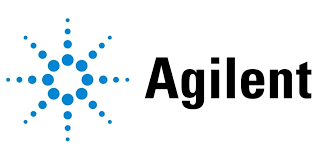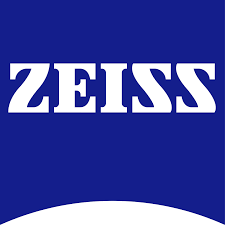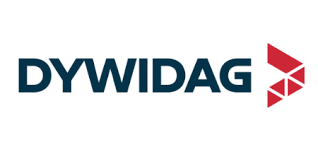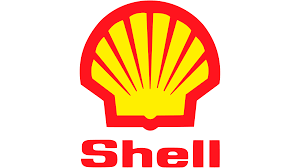Lawn Care Robots Market Size, Share, Industry Trends and Forecast to 2033
This comprehensive report on the Lawn Care Robots market delivers valuable insights into market dynamics between 2024 and 2033. It covers market size, growth trends, segmentation, regional performance, technological innovations, and competitive landscape. This analysis is designed to empower stakeholders with actionable data for strategic planning and informed decision-making in this evolving industry.
| Metric | Value |
|---|---|
| Study Period | 2024 - 2033 |
| 2024 Market Size | $2.30 Billion |
| CAGR (2024-2033) | 6.0% |
| 2033 Market Size | $3.94 Billion |
| Top Companies | Robotech Solutions Inc., GreenMow Technologies, EcoLawn Robotics |
| Last Modified Date | 02 June 2025 |
Lawn Care Robots (2024 - 2033)
Lawn Care Robots Market Overview
What is the Market Size & CAGR of Lawn Care Robots market in 2024?
Lawn Care Robots Industry Analysis
Lawn Care Robots Market Segmentation and Scope
Request a custom research report for industry.
Lawn Care Robots Market Analysis Report by Region
Europe Lawn Care Robots:
Europe showcases balanced growth with a keen focus on sustainability and energy efficiency. The regional market, valued at about $0.76 billion in 2024, is forecast to reach approximately $1.30 billion by 2033. Shifts from traditional lawn care methods to automated systems, driven by environmental concerns and government incentives for green technologies, support this upward trend.Asia Pacific Lawn Care Robots:
In Asia Pacific, rapid urbanization, rising disposable incomes, and an increasing emphasis on technological innovation are driving growth. The region's market is projected to expand from approximately $0.39 billion in 2024 to $0.66 billion by 2033. Government initiatives promoting smart home technologies and green practices further boost consumer interest and adoption rates across both residential and commercial segments.North America Lawn Care Robots:
North America remains a leading market, driven by strong technological adoption and a high prevalence of smart home solutions. With a market size estimated at $0.83 billion in 2024 and projected growth to $1.42 billion by 2033, the region benefits from robust consumer confidence, continuous product innovation, and substantial investments in R&D, ensuring sustained market leadership and dynamic growth.South America Lawn Care Robots:
South America, while representing a smaller market size, demonstrates steady growth potential. The market is expected to increase from around $0.08 billion in 2024 to $0.14 billion by 2033. Economic development, improved access to modern technologies, and growing consumer interest in automated home care are pivotal factors contributing to this gradual expansion.Middle East & Africa Lawn Care Robots:
The Middle East and Africa region exhibits promising yet gradual growth. Projected to expand from roughly $0.24 billion in 2024 to $0.41 billion by 2033, this region is gradually embracing automated lawn care solutions despite initial technological skepticism. Increasing urbanization and targeted investments aimed at modernizing home and commercial infrastructure are gradually fostering market acceptance in these areas.Request a custom research report for industry.
Lawn Care Robots Market Analysis By Product
Global Lawn-Care Robots Market, By Product Market Analysis (2024 - 2033)
The by-product segment examines the core product offerings in the Lawn Care Robots market, which include Battery Operated Robots, Robotic Mowers, and Accessories. Battery Operated Robots lead the category with significant market size and a steady share of approximately 64.49%, attributed to their advanced functionalities and energy efficiency. Robotic Mowers are gaining popularity due to their performance capabilities and ease of maintenance, contributing around 21.87% of the market share. Accessories, although holding a smaller share of about 13.64%, play a crucial role by enhancing product performance and customization options. Overall, these segments collectively drive market growth by offering diverse solutions that cater to various consumer needs and preferences.
Lawn Care Robots Market Analysis By Technology
Global Lawn-Care Robots Market, By Technology Market Analysis (2024 - 2033)
The by-technology segment focuses on the innovative technologies that form the backbone of modern Lawn Care Robots. This segment is divided into GPS Enabled, Sensor Based, and AI-Driven Technology categories. GPS Enabled systems facilitate precise navigation and mapping, ensuring optimal coverage and efficiency. Sensor Based robots are equipped with advanced detection mechanisms to sense obstacles and adjust operations accordingly, thereby enhancing safety and performance. AI-Driven Technology further elevates capabilities by incorporating machine learning algorithms that enable predictive maintenance and smarter route optimization. Together, these technological advancements are instrumental in driving product improvements and creating a competitive edge in both residential and commercial markets.
Lawn Care Robots Market Analysis By Application
Global Lawn-Care Robots Market, By Application Market Analysis (2024 - 2033)
The by-application segment delineates the various use-cases of Lawn Care Robots, categorizing them into Residential Lawn Care, Commercial Lawn Care, and Landscaping Applications. Residential Lawn Care solutions are designed for ease of use, cost-effectiveness, and energy efficiency, meeting the needs of homeowners seeking to maintain their gardens with minimal effort. Commercial Lawn Care products, on the other hand, are engineered to address the complexities of large-scale maintenance, offering robust performance and reliability. Landscaping Applications merge aesthetics with automation, providing customizable solutions that cater to the unique requirements of professional landscaping. These application-specific offerings are supported by detailed market data and are anticipated to continue growing as technological integration deepens and consumer preferences evolve.
Lawn Care Robots Market Analysis By End User
Global Lawn-Care Robots Market, By End-User Market Analysis (2024 - 2033)
The by-end-user segment categorizes the primary consumers of Lawn Care Robots into Homeowners, Landscapers, and Commercial Establishments. Homeowners represent a major portion of the market due to the convenience and efficiency offered by automated solutions, which simplify routine lawn maintenance tasks. Landscapers are increasingly adopting these robots as they offer consistent performance, reduce labor costs, and contribute to higher work efficiency. Commercial Establishments, including offices and public spaces, are beginning to recognize the value of automated systems that ensure precise, round-the-clock maintenance. The growth patterns observed across these end-user segments highlight the diverse applicability of Lawn Care Robots and underline their role in revolutionizing traditional maintenance practices.
Lawn Care Robots Market Trends and Future Forecast
Request a custom research report for industry.
Global Market Leaders and Top Companies in Lawn Care Robots Industry
Robotech Solutions Inc.:
A pioneering company in the field of lawn care robotics, Robotech Solutions Inc. leverages cutting-edge technology to develop innovative, energy-efficient robotic systems for both residential and commercial segments.GreenMow Technologies:
Recognized for its robust engineering and focus on sustainable automation, GreenMow Technologies has been instrumental in shaping industry standards with its advanced sensor-based and AI-driven lawn care solutions.EcoLawn Robotics:
EcoLawn Robotics excels in integrating smart navigation and environmentally friendly features into its product line, ensuring reliable performance while promoting green practices across global markets.We're grateful to work with incredible clients.









Related Industries
FAQs
What is the market size of lawn Care Robots?
The global lawn-care-robots market is valued at approximately $2.3 billion in 2024, with a projected Compound Annual Growth Rate (CAGR) of 6.0% through 2033. This growth reflects increased adoption of automation in residential and commercial lawn care.
What are the key market players or companies in this lawn Care Robots industry?
Key players in the lawn-care-robots market include prominent companies specializing in robotics and lawn care solutions. These players are continually innovating to capture market share, focusing on advanced features such as AI and sensor technology.
What are the primary factors driving the growth in the lawn Care Robots industry?
Growth in the lawn-care-robots industry is driven by technological advancements, increased consumer preference for automated solutions, and a rise in environmental sustainability efforts, creating demand for eco-friendly lawn maintenance alternatives.
Which region is the fastest Growing in the lawn Care Robots?
North America is the fastest-growing region in the lawn-care-robots market, projected to reach $1.42 billion by 2033, from $0.83 billion in 2024. Europe and Asia Pacific are also significant growth areas, reflecting global adoption trends.
Does ConsaInsights provide customized market report data for the lawn Care Robots industry?
Yes, ConsaInsights offers customized market report data tailored to specific needs within the lawn-care-robots industry, providing in-depth analysis and insights focused on trends, segments, and regional dynamics.
What deliverables can I expect from this lawn Care Robots market research project?
From the lawn-care-robots market research project, clients can expect detailed market analysis reports, segmentation studies, competitive landscape assessments, growth forecasts, and actionable insights tailored to their strategic requirements.
What are the market trends of lawn Care Robots?
Current trends in the lawn-care-robots market include increasing demand for battery-operated models, smart technology integration, and enhancements in user experience through mobile connectivity and AI-driven functionalities, transforming lawn maintenance.
Customize Lawn Care Robots market research report
- ✔ Get in-depth analysis of Lawn Care Robots market size, growth, and forecasts.
- ✔ Understand Lawn Care Robots's regional dynamics and industry-specific trends.
- ✔ Identify potential applications, end-user demand, and growth segments in Lawn Care Robots
